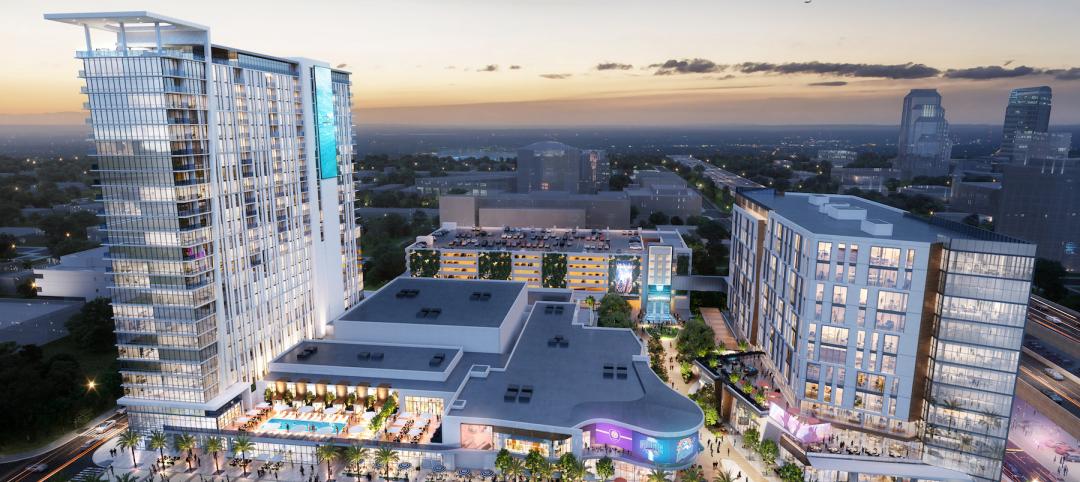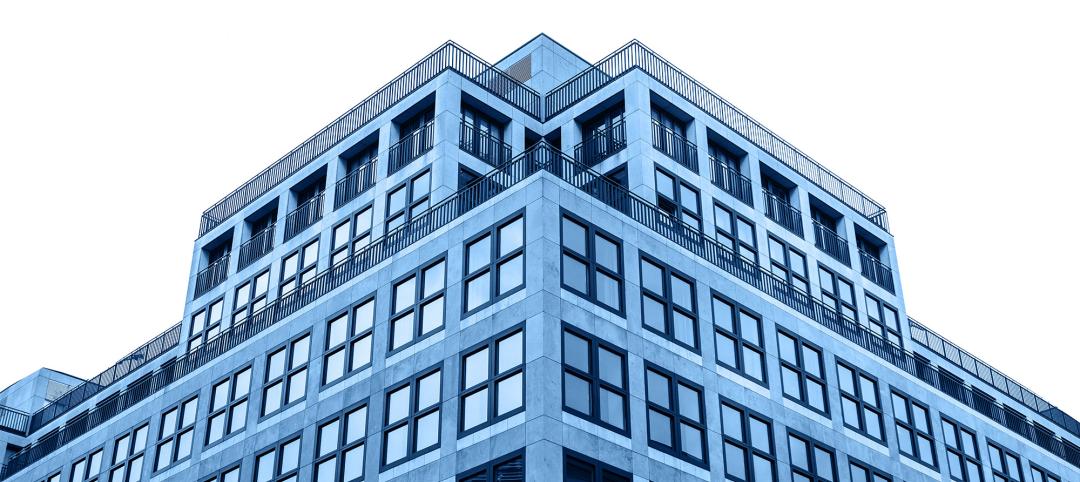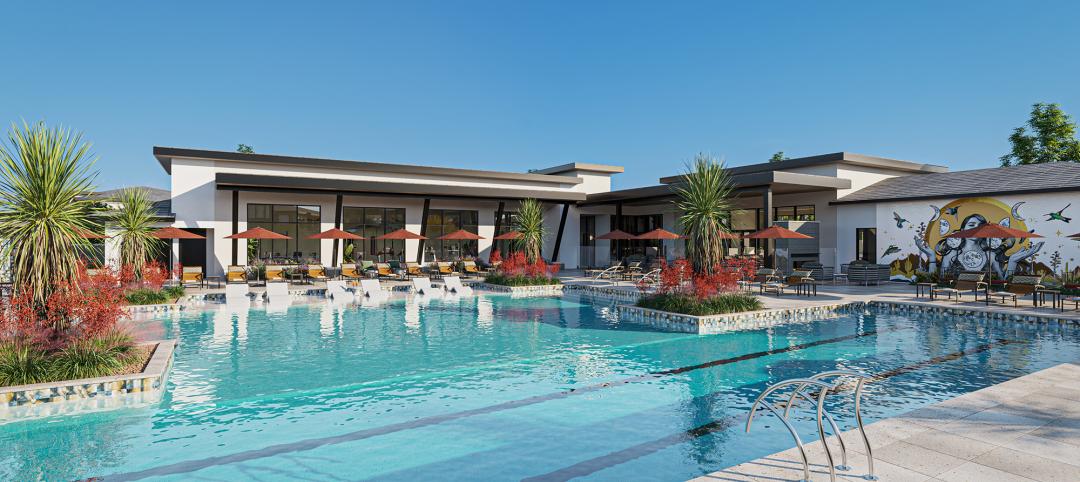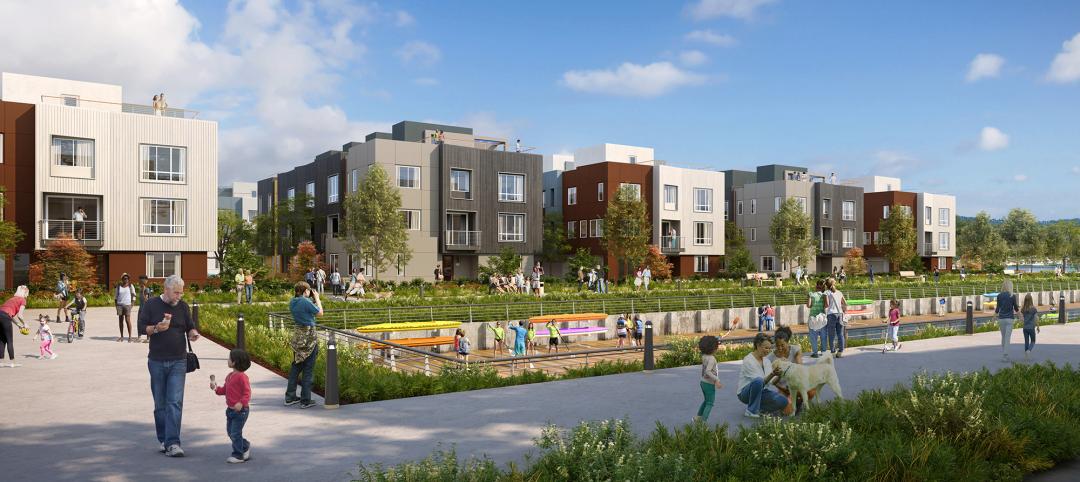LEARNING OBJECTIVES
After reading this article, you should be able to:
+ LIST 3 myths related to the use of video cameras in apartment and condominium communities.
+ DEFINE "choke points" and their application to the siting of video surveillance cameras.
+ DISCUSS several physical design factors that can impede the efficacy of video surveillance systems.
+ REVIEW the impact of intensity, uniformity, and color rendering in lighting and their effect on video cameras.
“Cameras can be part of a security program, but they’re not the security solution itself.” That’s the first thing to understand about video surveillance systems for apartment and condominium projects, according to veteran security consultant Michael Silva, CPP.
You need to establish your security needs and develop a comprehensive security plan in the early stages of design. “The questions that don’t get asked during the design phase are almost impossible to correct when the concrete’s being poured,” said Silva. (See our 2017 BDCuniversity AIA Course for guidance on creating a security plan.)
In most cases, you’ll want to hire a specialist to help you design your system. “It’s a professional skill,” said Silva, a Certified Protection Professional, considered the “gold standard” by ASIS International, the organization that certifies security professionals. “You wouldn’t want anyone but a structural engineer to tell you where to place your columns. Same idea for your video surveillance system.”
Some architectural and electrical engineering firms have security system specialists on staff, but if that’s not the case, said Silva, hire a reputable security consultant to help choose your video system and advise you on how to deploy it. (Best source for locating a qualified security consultant: International Association of Professional Security Consultants.)
In planning your system, you need to be aware of what Silva calls the “three dirty secrets” of video surveillance systems:
1. Video cameras rarely deter crime. Most petty criminals either know they’re being recorded or don’t care, because they know local police departments don’t have the manpower to investigate minor crimes.
2. Most recorded video is useless as evidence. The image quality is rarely good enough to present in court, said Silva, and it would be cost-prohibitive to have a system that, for example, covered every square foot of a parking garage just so a tenant could determine who backed into her car.
3. Even the most up-to-date “megapixel” security cameras won’t cure all your video surveillance problems. They can’t “see” through concrete columns, and they may not be focused at the right angle. (For more discussion of security cameras, see Silva's report, "Three Dirty Little Secrets about Video Surveillance Systems.")
In other words, despite what you see on “CSI” and “Law & Order,” video surveillance systems won’t completely prevent crime from happening on your property and won’t solve those crimes if they do happen. “Their primary purpose is to tell the story after the fact,” said Silva, so that the property manager can tell when and where an incident may have occurred and who may have been involved in it. Silva said he does encourage leasing offices and building managers to have a live video on display at all times, so that suspicious activity—“Who’s that person hanging around the loading dock?”—can be detected before something serious happens.
The most cost-effective route, said Silva, is to install cameras at “choke points”—critical intersections where cameras have the best chance of capturing a good image, such as the parking garage gate, the elevator lobby, and stairway entrances.
When you get to the point of actually specifying products, your security consultant should be able to give you a list of several reputable manufacturers to choose from. Silva recommends specifying security-grade cameras that work well on dark nights and in light fog (no video camera works well in dense fog, he noted) and that counteract headlight glare and lighting hot spots.
Don’t forget to check out the manufacturer’s support services. “If you get some product from outside the U.S., they may have only one domestic office for support, and it could be miles away,” Silva warned.
For a well-designed system you should budget about $2,000 per camera, including cabling, conduit, recording equipment, and installation, and negotiate downward with your supplier from that point, said Silva. But be aware that image quality can vary greatly even for the new megapixel cameras. “Cameras with a higher megapixel rating don’t necessarily produce better quality images than cameras with a lower megapixel rating,” he warns.
GET THE SECURITY LIGHTING RIGHT TO MAXIMIZE surveillance cameras IN APARTMENTS
Your video surveillance system won’t be effective if the intensity (the brightness of the light), uniformity (the consistency of the light level from place to place throughout the lighted area), and color rendering (how accurately the lighting renders colors) of the lighting aren’t right. This is especially true for outdoor lighting and lighting in parking garages.
Uniformity is the ratio of the maximum lighting level to the miminal lighting level in a specified area. Silva recommends a maximum uniformity ratio of 3:1 for most outdoor parking lot applications. If the uniformity ratio is too high, you’ll have “hot spots” (bright areas of glare) and “cool spots” (dark areas); in either case, the image quality will be poor.
In general, it’s better to have more lighting fixtures, more evenly spaced, than to rely on one or two high-powered luminaires. Silva further cautions against putting high-intensity lighting fixtures high up on your building and expecting them to “cover” the entire site; in most cases, the fixtures will not “spread” the light for optimal uniformity.
For courtyards, make sure you have adequate lighting along walkways. As they grow, trees and other plantings can block lighting, so be sure that landscaping is properly trimmed to prevent this.
For surface parking lots, Silva recommends an absolute minimum light level of one foot-candle throughout the entire area; 2–4 fc would be even better. Lighting in parking garages can be more difficult, given the many blockages from columns, elevator areas, etc.
Until recently, metal halide lamps were Silva’s preference for outdoor lighting; he said they’re still suitable for projects with smaller budgets. Now, however, Silva recommends LEDs. “They cost more than other systems, but they’re worth it,” he said.
He recommends LEDs that provide a white light spectrum, for more natural color rendition. “Architects will often specify colored lighting for aesthetic reasons, but for security purposes pure white light is best,” said Silva.
In siting the luminaires, minimize light intrusion into living spaces. You also want to use fixtures with shielding that guards against light pollution, especially if you’re going for LEED certification. |M|
For more from Michael Silva on lighting your parking lot for security, see lighting for security.
Related Stories
ProConnect Events | Apr 23, 2024
5 more ProConnect events scheduled for 2024, including all-new 'AEC Giants'
SGC Horizon present 7 ProConnect events in 2024.
Mixed-Use | Apr 23, 2024
A sports entertainment district is approved for downtown Orlando
This $500 million mixed-use development will take up nearly nine blocks.
Resiliency | Apr 22, 2024
Controversy erupts in Florida over how homes are being rebuilt after Hurricane Ian
The Federal Emergency Management Agency recently sent a letter to officials in Lee County, Florida alleging that hundreds of homes were rebuilt in violation of the agency’s rules following Hurricane Ian. The letter provoked a sharp backlash as homeowners struggle to rebuild following the devastating 2022 storm that destroyed a large swath of the county.
Student Housing | Apr 19, 2024
$115 million Cal State Long Beach student housing project will add 424 beds
A new $115 million project recently broke ground at California State University, Long Beach (CSULB) that will add housing for 424 students at below-market rates. The 108,000 sf La Playa Residence Hall, funded by the State of California’s Higher Education Student Housing Grant Program, will consist of three five-story structures connected by bridges.
Sponsored | Multifamily Housing | Apr 19, 2024
5 Reasons to Opt for Wood I-Joists in Multifamily Construction
From versatility to reliability and adaptability, engineered wood I-joists offer builders, designers and developers numerous advantages in multifamily construction. Discover the top five benefits and handy installation tips.
MFPRO+ News | Apr 18, 2024
Marquette Companies forms alliance with Orion Residential Advisors
Marquette Companies, a national leader in multifamily development, investment, and management, announces its strategic alliance with Deerfield, Ill.-based Orion Residential Advisors, an integrated multifamily investment and operating firm active in multiple markets nationwide.
MFPRO+ New Projects | Apr 16, 2024
Marvel-designed Gowanus Green will offer 955 affordable rental units in Brooklyn
The community consists of approximately 955 units of 100% affordable housing, 28,000 sf of neighborhood service retail and community space, a site for a new public school, and a new 1.5-acre public park.
MFPRO+ News | Apr 15, 2024
Two multifamily management firms merge together
MEB Management Services, a Phoenix-based multifamily management company, and Weller Management, a third-party property management and consulting company, officially merged to become Bryten Real Estate Partners—creating a nationally recognized management company.
Mixed-Use | Apr 13, 2024
Former industrial marina gets adaptive reuse treatment
At its core, adaptive reuse is an active reimagining of the built environment in ways that serve the communities who use it. Successful adaptive reuse uncovers the latent potential in a place and uses it to meet people’s present needs.
MFPRO+ News | Apr 12, 2024
Legal cannabis has cities grappling with odor complaints
Relaxed pot laws have led to a backlash of complaints linked to the odor emitted from smoking and vaping. To date, 24 states have legalized or decriminalized marijuana and several others have made it available for medicinal use.

















